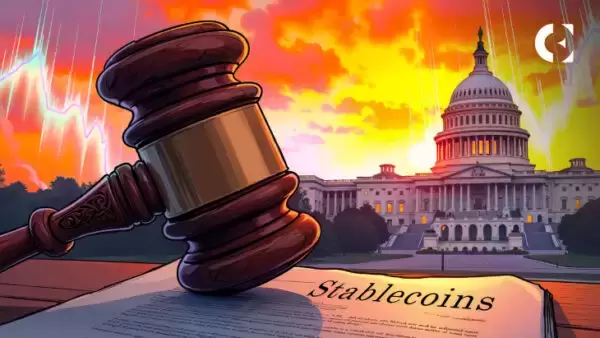 |
|
 |
|
 |
|
 |
|
 |
|
 |
|
 |
|
 |
|
 |
|
 |
|
 |
|
 |
|
 |
|
 |
|
 |
|
Cryptocurrency News Articles
The Hidden Forces Shaping Cryptocurrency: Beyond Decentralization
Nov 19, 2024 at 04:45 am
While cryptocurrencies are celebrated for their decentralized nature, several unspoken facets influence their ecosystem, where technology and human intervention intersect.

Cryptocurrencies have often been hailed as the epitome of financial freedom and decentralization. But who truly holds the reins of this digital frontier? The answer is multifaceted and lies in the interplay between technology, developers, and the community itself.
At the core, the control of any cryptocurrency is linked to its underlying technology—blockchain. This distributed ledger system is maintained by a network of nodes, which are computers around the world that validate and record transactions. No single entity can control the blockchain; instead, it relies on the collective consensus of these nodes. In theory, this ensures that cryptocurrencies remain decentralized and neutral.
However, developers also wield significant influence. They create and update the blockchain software, implement hard forks, and propose improvements. For instance, the core developers of Bitcoin or Ethereum play a pivotal role in deciding technical directions and updates. Yet, their power is checked by the network's need for consensus. If the majority of nodes or miners disagree with a change, it cannot be implemented.
Moreover, the market dynamics influence control. Large holders, known as “whales,” can sway prices through significant buy or sell actions. Exchanges also play a crucial role, as they provide the infrastructure for trading and can delist or suspend the trading of a cryptocurrency, affecting its value and usability.
Ultimately, the control of cryptocurrency is a shared responsibility, blending technological frameworks with the actions of developers, miners, and market participants. This complex web ensures a unique balance that continues to evolve with the digital currency landscape.
Disclaimer:info@kdj.com
The information provided is not trading advice. kdj.com does not assume any responsibility for any investments made based on the information provided in this article. Cryptocurrencies are highly volatile and it is highly recommended that you invest with caution after thorough research!
If you believe that the content used on this website infringes your copyright, please contact us immediately (info@kdj.com) and we will delete it promptly.
-

-

-

- Fidelity Investments introduces an individual retirement account (IRA) that permits private investors to invest in cryptocurrencies
- Apr 03, 2025 at 10:10 am
- According to the company's website, investors can add virtual assets to their retirement portfolio through Fidelity Crypto for IRAs. However, only Bitcoin, Ether, and Litecoin are the assets available now.
-

- President Donald Trump Announces Sweeping Reciprocal Tariffs on Global Imports and Declares April 2, 2025, “Liberation Day”
- Apr 03, 2025 at 10:10 am
- President Donald Trump marked April 2, 2025, as “Liberation Day” for American industry, signing an executive order to impose reciprocal tariffs on imports
-

- The price of Solana (SOL) is desperately trying to remain above important support levels amid increasing pressure
- Apr 03, 2025 at 10:05 am
- In the last 24 hours SOL crashed from $138 to $131, wiping out gains from a mid-March rally. Technical charts show a bearish rejection at the 50% Fibonacci retracement level ($146.5)
-

- Ethereum (ETH) is again in the limelight, since technical indicators indicate bullish and network activities to a possible turnaround.
- Apr 03, 2025 at 10:05 am
- The ETH is currently acting at $ 1900, whereby analysts indicate a potential bull run if the asset can reclaim the most important resistance levels.
-

- U.S. House Financial Services Committee Advances “STABLE Act” Aimed at Creating a Dedicated Framework for Stablecoin Regulation
- Apr 03, 2025 at 10:00 am
- The STABLE Act, designed to create a dedicated federal framework specifically for stablecoin regulation, has reportedly gained significant bipartisan support.
-

-

- Shocking footage has emerged of a woman cutting down a poster of independent Fowler MP Dai Le
- Apr 03, 2025 at 09:55 am
- Shocking footage has emerged of a woman cutting down a poster of independent Fowler MP Dai Le, saying she's doing so because the Vietnamese-Australian is a “Communist” and a “Muslim”.




























































